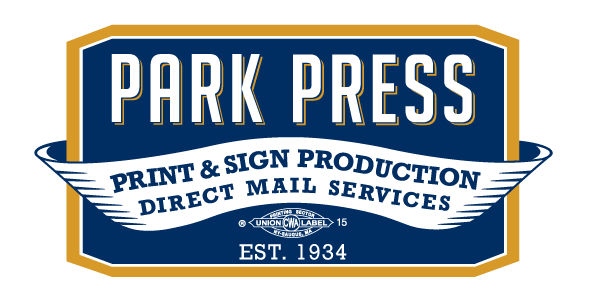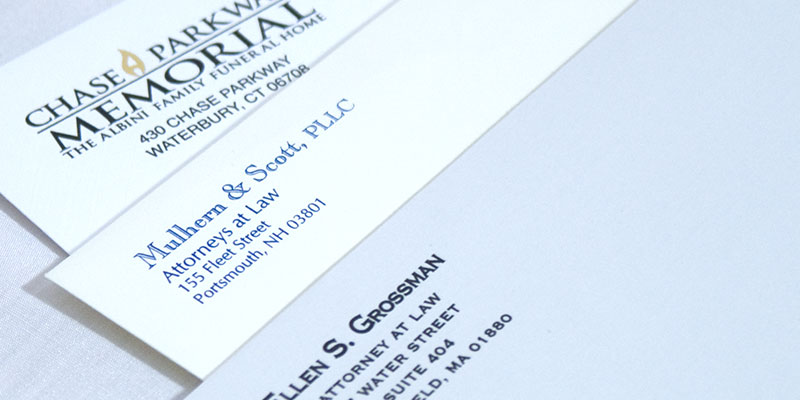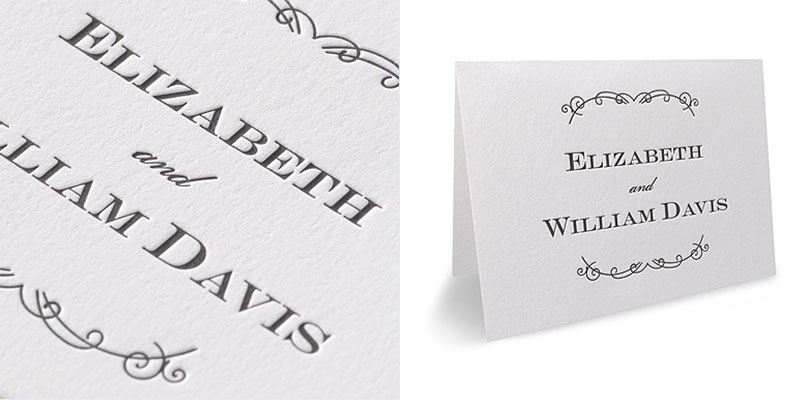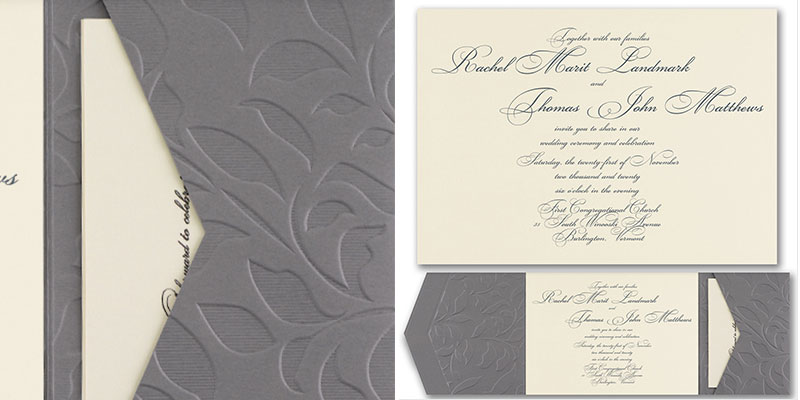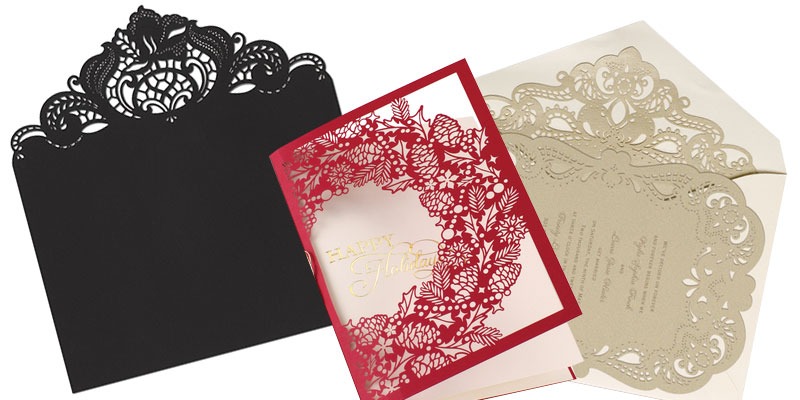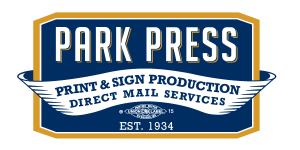
I want 100 invites, blue and gold, with a ribbon that wraps around the whole piece, and everything will fit inside…also it’s in the shape of a flower…the whole thing… What? That’s how much? But why??? THIS IS MY WEDDING!?
Have you found yourself in this place? Desperate to make a unique invitation that won’t cause you to pawn your engagement ring to cover the cost. Well my friend, you are not alone. But I have good news, at Park Press Printers, you can get an amazing wedding invitation and not go into debt for the rest of your life! Below I am going to show you 5 printing methods for invitations that will astound your guests and will not cost you an arm and a leg.
Invitations Definition
Technically a piece of paper saying “ hey Ted come over at 3” would qualify as an invitation, but we are striving for something a little more…elegant? Our invitation definition is something more along the lines of “The delivery of fine handcrafted art luring people to an event they feel honored to be a part of.” OK, maybe that is more gaudy than elegant but it still paints a beautiful picture. Anyway, first on the list:
Thermography Printing
Commonly used on greeting cards, wedding invitations, and other printed materials that require embossing, Thermographic printing is a beautiful printing technique. Along with the different types of invitations thermography printing is also used widely on business cards, letterheads, and envelopes. This printing method is giving a 3D edge to printed fonts and simple logos. It can also be used as the detail to 2D images.
What is Thermography Printing
Thermographic printing or Raised Ink Printing refers to two types of printing, both of which rely on heat to create the letters or images on a sheet of paper.
The simplest type of thermography is where the paper has been coated with a material that changes color on heating. This is called thermal printing and was used in older model fax machines and is used in most shop till receipt printers. Thank you very much, Wikipedia.
Step one of thermography printing is the application of a powder commonly known as embossing/ thermographic powder. Using powder and plastic resins, the powder coats the page and attaches itself to the wet ink.
Next, the invitation moves to the vacuum. The excess powder is removed from the paper, leaving only the inked parts coated and ready for the final stage.
Finally, the invitation goes into the area of the machine where it is exposed to temperatures between 900 and 1300°C for 2 to 3 seconds.
As it passes through the oven, the substrate rises in temperature, causing the powder-coated elements of the page to melt and transform until they look shiny, raised and slightly bubble-like. One the product has cooled down it is ready for you to take home.
Letterpress Printing
Next, we move to the famous Letterpress! Once the fastest way to print now probably the slowest. But what the Letterpress lacks in speed it makes up for in beauty. The letterpress is one of the best ways to instantly impress your guests.
Put simply, letterpress printing is a form of relief printing, where the text or image is on a raised surface, similar to a rubber stamp. Ink is applied to the raised surface and then the paper is pressed directly against it to transfer the text/image. Despite popular belief, printing from moveable type was actually invented in China in 1041, and then again four centuries later in Europe.
What is the Difference between Letterpress v.s Embossing
A lot of people ask “ what is the difference between Letterpress v.s. Embossing” and the answer is actually less complicated than some might think. Letterpress printing leaves an impression in the paper by pressing into the paper from one side. An impression can be made with or without ink. Inkless impressions leave a colorless, or “blind” impression.
Embossing and Debossing use the same method with one slight difference. Embossing produces a raised image by pressing paper between a two-sided die and Debossing produces a depressed image by pressing paper between a two-sided die. Neither of these methods uses ink. There are also cost differences between embossing/debossing and letterpress.
Today, letterpress printing is loved by many for leaving a tactile and visual impression into the paper – some call it “debossed.” Although this practice is unique to contemporary letterpress printing, it communicates elegance and handcrafted quality that can’t be matched by any other printing method.
Die Cut Invitation Printing
Die-cut invitation printing is probably one of the most common requests for invitation printing. What’s better than having a little slice of a flower peeking out above your folded card? Nothing that’s what!
What is Die Cutting?
The Die cut definition in the dictionary is the general process of using a die to shear webs of low-strength materials, such as rubber, fiber, foil, cloth, paper, corrugated fiberboard, chicken, paperboard, plastics, pressure-sensitive adhesive tapes, foam, and sheet metal.
In lamens terms, we create an outlined image from sharp metal (the die) much like a cookie cutter and use it to cut the desired shape into the paper.
The process of die-cutting is easy for us as letterpress printers, as the set-up is similar to letterpress printing. Instead of a type-high printing plate, we use a type of high wood mounted steel cutting die. The shape of the cutting die is often something we’ve designed and ordered from our local die-makers. Occasionally we will make the die in-house.
We begin by setting up the Letterpress much as we would for letterpress printing, except instead of ink and rollers we attach the die.
Next, we attach metal plate/backing onto the press bed by locking the die into the chase and inserting the chase into the press. Then we’re ready to turn on the press and make a cut.
A die-cut can add a decorative element or a functional component to design. For stationery or invitations, creating a die-cut silhouette for your suite may add interest and a vintage feel. Using a small punch-out within the invitation as a motif can be a nice touch (in this case, a modern feel). A functional die-cut might be something like a half-moon thumb hole on an open-ended envelope, or a notch system in a folded piece. There are many possibilities for die-cutting, but the medium has limitations.
Laser Cut Printing
Do you want to go the extra mile and really wow your guests? Then laser cut printing is the way to go. I mean, come on, it has laser in the name! This truly awesome technique uses the precision and accuracy of a laser to cut out your design. Laser cutting is precision cutting. This method creates a much finer cut than what you would get in a die cut. The detailed cuts made by laser-cutting allow us to cut intricate lace patterns, fretwork, text, logos, or other fine graphics into paper, thin paperboard or thin cardboard.
The best thing about Laser Cutting is, it is often more affordable than die-cutting for low-volume runs. This is due to the fact that laser-cuts are run on CNC machines and do not require a custom die to be cut for your print project.
Foil Stamping
Is it ok if I say “do you want to wow your guest” for all of these? Because really, they are all quite amazing. Foil printing is a classic and fabulous way to display your invitations. Nothing says elegance more than a touch of gold, am I right?
The way foil printing works is pretty amazing. The thin strip of foil – which comes in a variety of hues besides gold – is threaded through a foil press machine. Your surface (a blank card, invitation, etc.) is placed underneath the foil. The stamp is them heated and applied to your card with pressure. This leaves a deboss (which we all know what that is now) allowing the foil to fill in the remaining space. This method can be used for invitations, business cards, and even on books.
Conclusion
This is your special day and everything should be perfect, right? So why not start by getting perfect invitations. At Park Press Printers you can get unique and affordable invitations that will really leave your guests admiring your graphical taste. If you are looking for something a bit more simple, we also have available flat digital printing. No matter what you choose Park Press Printers has your solution. Thanks for stopping in and we hope to see you soon!
